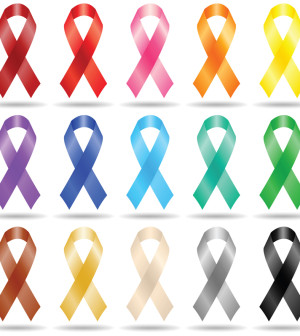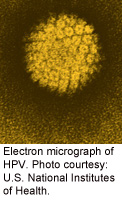- Skip Storing This Everyday Product in the Fridge Door
- Green Tea + B3 Pairing May Boost Brain Health
- Navigating Your Midlife Crisis: Embracing New Possibilities
- City Raccoons Showing Signs of Domestication
- Mapping the Exposome: Science Broadens Focus to Environmental Disease Triggers
- One Week Less on Social Media Linked to Better Mental Health
- Your Brain Changes in Stages as You Age, Study Finds
- Some Suicide Victims Show No Typical Warning Signs, Study Finds
- ByHeart Formula Faces Lawsuits After Babies Sickened With Botulism
- Switch to Vegan Diet Could Cut Your Greenhouse Gas Emissions in Half
FDA Approves Cervical Cancer Vaccine That Covers More HPV Strains


The U.S. Food and Drug Administration on Wednesday approved a new vaccine with expanded protection against the human papillomavirus (HPV), by far the leading cause of cervical and certain other cancers.
The agency said that Gardasil 9 can shield users against nine strains of the virus, compared to the four strains covered by Gardasil, the Merck & Co. vaccine approved in 2006. Merck also makes Gardasil 9.
“Gardasil 9 has the potential to prevent approximately 90 percent of cervical, vulvar, vaginal and anal cancers,” the FDA said in an agency news release.
“Vaccination is a critical public health measure for lowering the risk of most cervical, genital and anal cancers caused by HPV,” Dr. Karen Midthun, director of the FDA’s Center for Biologics Evaluation and Research, said in the release. “The approval of Gardasil 9 provides broader protection against HPV-related cancers.”
The U.S. Centers for Disease Control and Prevention currently recommends the HPV vaccine for boys and girls at age 11 or 12, so they are protected before being exposed to the sexually transmitted virus. One other HPV vaccine, Cervarix, was also approved by the FDA in 2009. Cervarix is made by GlaxoSmithKline and protects against two HPV strains strongly linked to cancer, HPV 16 and 18.
According to the FDA, the approval of Gardasil 9 was based on a clinical trial involving more than 14,000 girls and women aged 16 to 26 who were not infected with HPV at the start of the trial. Participants were given either Gardasil or Gardasil 9.
“Gardasil 9 was determined to be 97 percent effective in preventing cervical, vulvar and vaginal cancers caused by the five additional HPV types [31, 33, 45, 52, and 58],” the FDA said. “In addition, Gardasil 9 is as effective as Gardasil for the prevention of diseases caused by the four shared HPV types (6, 11, 16 and 18).”
For younger people — boys and girls aged 9 through 15 — Garadsil 9 was determined to be effective from measurements of immune-system antibody responses to the vaccine, the FDA explained. “Based on these results, the vaccine is expected to have similar effectiveness when used in this younger age group,” the agency said.
In terms of safety, the FDA said that the most common adverse effects were injection site pain, swelling, redness and headaches.
Like Gardasil, Gardasil 9 is administered as three separate shots, with the second and third doses given two and six months after the first one, respectively.
This year, about 12,360 new cases of invasive cervical cancer will be diagnosed, and about 4,020 women will die from the disease, according to the American Cancer Society.
More information
Find out more about HPV at the U.S Centers for Disease Control and Prevention.
Source: HealthDay
Copyright © 2025 HealthDay. All rights reserved.










